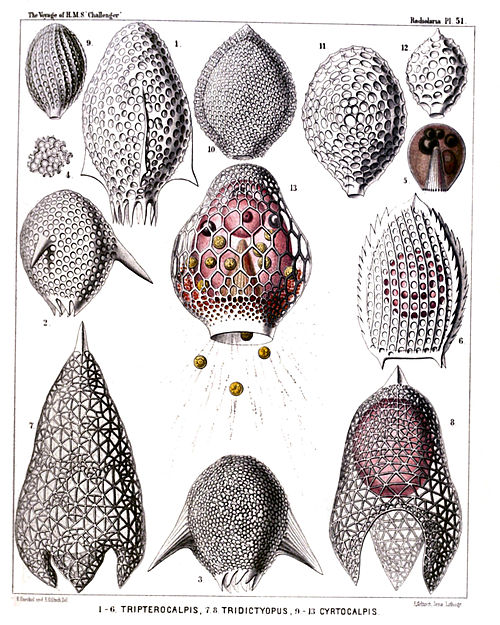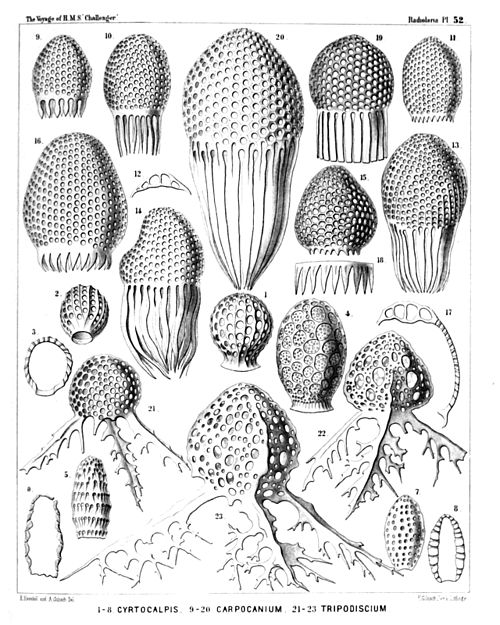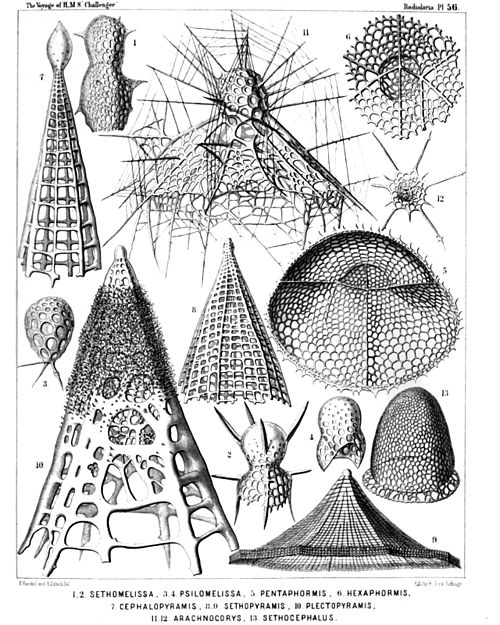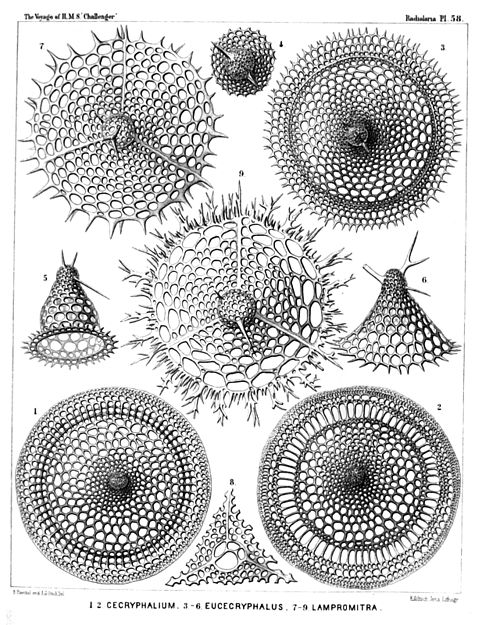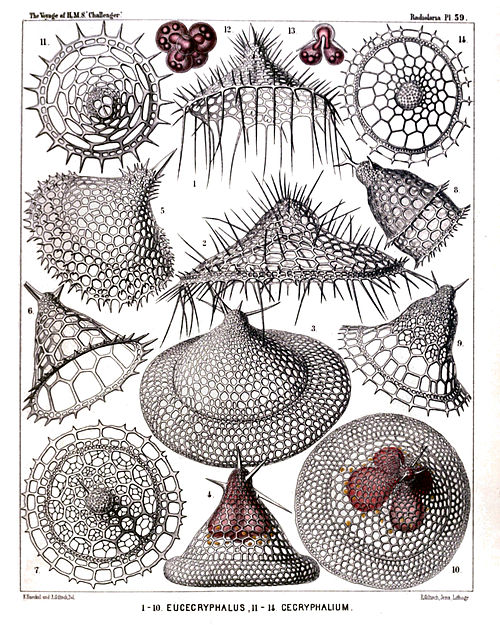Report on the Radiolaria/Plates6
PLATE 51.
Legion NASSELLARIA.
Order CYRTOIDEA.
Families Tripocalpida, Phænocalpida et Cyrtocalpida.
|
||||||||||||||||||||||||||||||||||||||||||||||||||||||||||||||||||||
PLATE 52.
Legion NASSELLARIA.
Order CYRTOIDEA.
Families Tripocalpida, Phænocalpida, Cyrtocalpida et Anthocyrtida.
|
|||||||||||||||||||||||||||||||||||||||||||||||||||||||||||||||||||||||||||||||||||||||||||||||||||||||||||||||
PLATE 53.
Legion NASSELLARIA.
Orders SPYROIDEA et CYRTOIDEA.
Families Zygospyrida, Tripocalpida, Phænocalpida et Cyrtocalpida.
|
||||||||||||||||||||||||||||||||||||||||||||||||||||||||||||||||||||||||||||||||||||||||||||||||||||||||||
PLATE 54.
Legion NASSELLARIA.
Order CYRTOIDEA.
Families Phænocalpida, Cyrtocalpida, Anthocyrtida et Sethocyrtida.
|
|||||||||||||||||||||||||||||||||||||||||||||||||||||||||||||
PLATE 55.
Legion NASSELLARIA.
Order CYRTOIDEA.
Families Phænocalpida, Anthocyrtida et Sethocyrtida.
|
||||||||||||||||||||||||||||||||||||||||||||||||||||||||||||||||||||
PLATE 56.
Legion NASSELLARIA.
Order CYRTOIDEA.
Families Tripocyrtida, Anthocyrtida et Sethocyrtida.
|
||||||||||||||||||||||||||||||||||||||||||||||||||||||||||||||||||||
PLATE 57.
Legion NASSELLARIA.
Order CYRTOIDEA.
Families TRIPOCYRTIDA, ANTHOCYRTIDA et SETHOCYRTIDA.
|
|||||||||||||||||||||||||||||||||||||||||||||||||||||||||||||||||||||
PLATE 58.
Legion NASSELLARIA.
Order CYRTOIDEA.
Families Tripocyrtida, Sethocyrtida, Phormocyrtida et Theocyrtida.
|
||||||||||||||||||||||||||||||||||||||||||||||||||||||||||
PLATE 59.
Legion NASSELLARIA.
Order CYRTOIDEA.
Families Tripocyrtida, Podocyrtida et Phormocyrtida.
|
||||||||||||||||||||||||||||||||||||||||||||||||||||||||||||||||||||||||||||
PLATE 60.
Legion NASSELLARIA.
Order CYRTOIDEA.
Family Tripocyrtida.
|
||||||||||||||||||||||||||||||||||||||||||||||||||||||||||||||||||||

